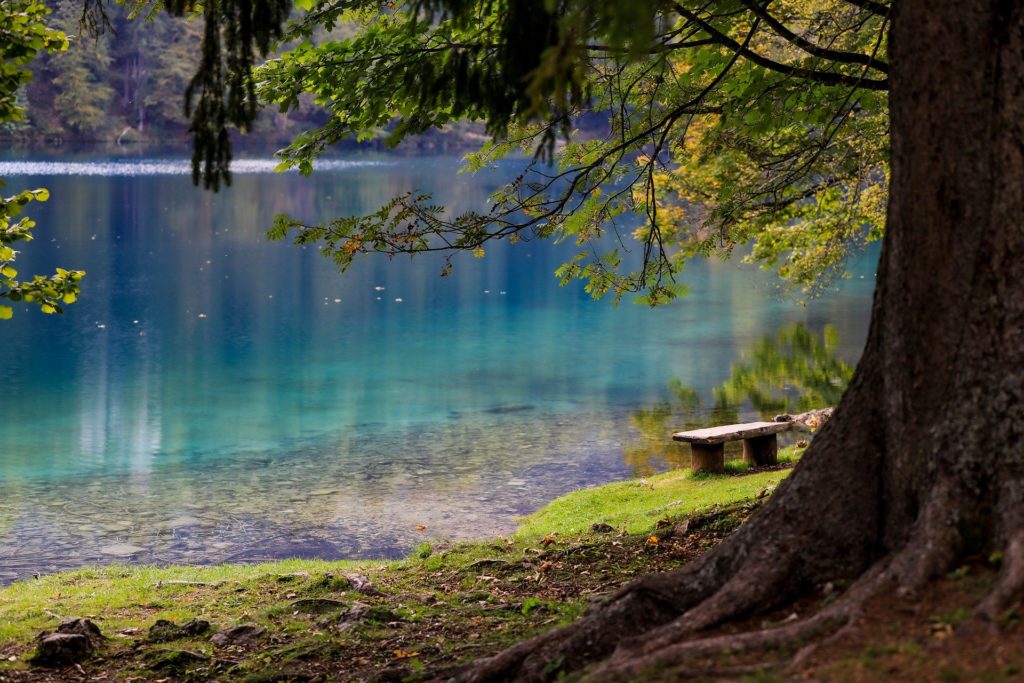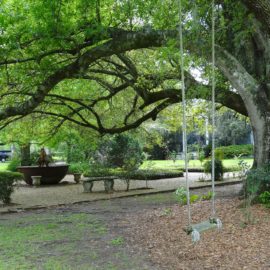
Parks and trees is what the Mayor wants for New Orleans. This is a climate change effort that the citizens will enjoy.
As record-breaking heat waves sweep the United States, New Orleans Mayor Latoya Cantrell has committed New Orleans to a global initiative to expand urban green space, with a goal of cooling the city and reducing flooding. Her pledge, on the heels of New Orleans’ fifth wettest spring since 1871, comes as climate data portends progressively warmer and wetter weather in the decades to come. Cantrell joined 30 other mayors who signed onto to New York-based nonprofit C40‘s latest international declaration to adapt to climate change. The declaration requires participating cities to ensure that 30% to 40% of their built-up surface are covered in green or permeable spaces by 2030. Currently, New Orleans sits at about 20%, said Rebecca Ilunga, C40’s water security network manager. Advocates hail the pledge but say New Orleans needs more public buy-in, a new parcel fee and more companies to expand both its green space – which can include trees, water bodies and parks – and permeable space such as green roofs and pervious pavement that are designed to absorb water. The C40 declaration also requires that growth occur equitably, so that at least 70% of residents live within a 15-minute walk or bike ride of a blue or green space.
nola.com

New Orleans already has some of these ideas in the Master Plan.
New Orleans’ master plan already includes similar targets such as increasing the city’s tree canopy to 50% by 2030 and placing a park within walking one third of a mile of every resident. City officials this year plan almost $200 million in green infrastructure projects using federal grant money. Slightly more than half that amount is to be spent in the Gentilly Resilience District, including several stormwater management projects aiming to hold 13 million gallons. “Investing in nature-based infrastructure improvements has long been a focus of my administration’s adaptation strategy,” Cantrell said. “This is an example of how we are playing to our strengths, using our natural climate to our advantage instead of trying to fight it.”
Nonprofit organizations have begun to educate the population on ways to fight Climate Change. There efforts will join with the cities but the citizens are not flocking to learn.
A number of New Orleans-based nonprofits, including the Urban Conservancy and The Water Collaborative, already work to educate and aid property owners on installing their own permeable surfaces, rain gardens and rain barrels to reduce flooding. But they say public awareness remains low and must be overcome. Urban Conservancy Executive Director Dana Eness said promotion of green stormwater infrastructure increased after Hurricane Katrina and the federal levee failures flooded an estimated 80% of New Orleans’ east bank in 2005. That’s when officials began shifting away from relying solely on pumping water out with conventional gray infrastructure. Eness and Water Collaborative Executive Director Jessica Dandridge say a broad and rapid expansion will require the buy-in of all stakeholders, from projects in the yards of individual residents to larger landholders such as businesses, hospitals and universities. “That is where we can see a project going that is storing millions as opposed to thousands of gallons of rain water,” Eness said.
Our problem, among many, is drainage. If the water drains it does not flood. There is a lot of concrete, concrete that does not let water pass through it.
Eness and Dandridge argue that New Orleans needs a stormwater or drainage fee, based on the amount of impervious surface on each property. The prospect of a tax would incentivize property owners to invest in their own permeable spaces. Revenue from the tax would go into a long-term maintenance fund for green infrastructure projects throughout the city. For residential property, Dandridge said, the monthly fee would be about $15 a month. Larger property owners with parking lots and buildings would bear the brunt of the tax. Should such a measure gain the support of voters, New Orleans will need more local companies capable of installing green infrastructure and more suppliers of materials. Right now, Dandridge said, there’s not nearly enough. “Do I think those barriers are insurmountable? Absolutely not,” Dandridge said. “There has to be a level of trust built between residents in our city government, and if the mayor can achieve that, you can achieve anything with green infrastructure because it works.”
By committing to C40, there is an annual requirement with 50% of the the finished plan to be in 5 years.
C40 will create a network among the cities to help them achieve their goals, possibly by finding grant money. Rather than leaving officials to tackle problems on their own, Ilunga said, “They can go straight to a city that’s actually implemented it, that’s done the challenge part and knows what the solution looks like on the ground.”
This plan sounds good. There are people who can work for getting it done such as the tree planting group. I am sure there are others. We should work as a city to make this happen.



